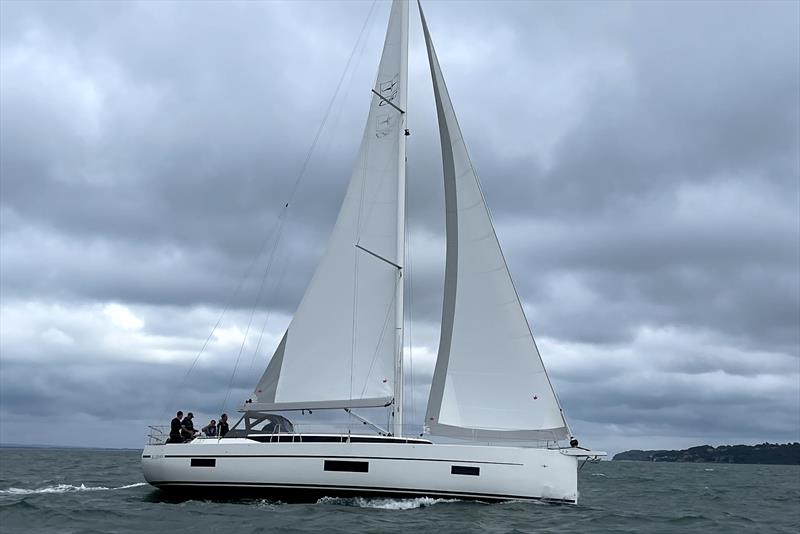
Monohull cruising: safety, when to reef, and what we learned from wireless load sensors
by Cyclops Marine 4 Dec 2024 12:50 GMT

Cyclops test sail onboard Bavaria C50 © Cyclops Marine
Monohull cruising: safety, when to reef and what we learned from wireless load sensors
Whether you're an experienced sailor, or growing in confidence, the tuning of your rig is key for both performance and safety.
Safety: when should you reef?
The answer to this question will vary depending on factors like yacht design, weight, and the preferences of sailors, but one thing is constant - the need to stay safe and protect your equipment.
Whatever you're monitoring to indicate when to reef will be combined with other visual and "feeling based" cues like resistance on the helm or rudder angle, but ideally you should act to depower your rig before these show up. The more reliant you are on subjective judgement, the less sure you can be of absolute safety.
What is a load sensor?
For those unfamiliar with load sensors, they provide user-friendly support to notify you with real-time load data direct from your rig to your mobile device or existing boat electronics. smarttune, the flagship load sensor for standing rigging from Cyclops Marine, replaces existing shroud turnbuckles, simply screwing on to provide a complete picture of the dynamic balance of the rig.
Displayed via Bluetooth, and accurate to within 1%, this instant feedback allows you to make crucial sail adjustments, maintaining optimal rig settings and providing a window into the load running through your equipment so damage can be avoided.
With Cyclops sensors installed on each cap shroud, live load data is displayed on your boat displays either as raw numbers or on an intuitive dial: green, amber and red being indicators of the safety level and providing simple visual clues on when to reef.
We went out for a test sail onboard a Bavaria C50 fitted with Cyclops load sensors to gather some insights. With both the main and headsail fully unfurled, the load on the rig measured 2.6 tonnes - pushing the rudder close to stalling, increasing the chance of a broach or loss of helm. The sensors helped the crew to pinpoint that at around 2.2 tonnes on the rig the C50 was high in the amber zone, and approaching red, allowing them to make the early decision to reef.
This meant that, with limited ways to quickly depower in a gust, the load sensors provided crucial data that kept the yacht and crew safe - reinforcing the importance of proactive reefing decisions.
Dock-based settings
Your dock-based settings could be compared to the tyre pressures of a car. When you buy a new car, just like when you buy a new yacht, you know that the tyre pressure is correct. As the life of your car extends, you have a known pressure level to return to - ensuring that you maintain safety between services.
However, until the popularisation of load sensors, owners of yachts had not had the power to maintain optimal rig settings to a minute degree of accuracy. Armed with wireless load sensors and recommended tensions provided by yacht manufacturers, owners can sail with renewed confidence every time they prepare to get on the water.
Longevity
Sailing with wireless load sensors monitoring your rig will not only prevent catastrophic damage in the short term. With the right rig settings, you will minimise unnecessary wear - extending the life of your yacht and other equipment. A broader range of sensors is available to cover other positions, such as soft rigging, furlers, and sail luffs.
Performance
Cyclops originally made its name in the high performance world of grand prix sailing, including the America's Cup and Vendée Globe. Even on a cruising yacht, you can enjoy the performance benefits. By checking load numbers, while sailing nicely, you can create a set of repeatable settings, allowing you to enjoy easier, faster sailing, with confidence in the safety of everyone on board. You have full assurance that your rig is where it should be.
Many yacht designers and boat builders offer Cyclops Load Sensors pre-installed, or they can be retrofitted to your existing yacht.
Contact the experts at Cyclops for more information, or learn more here.